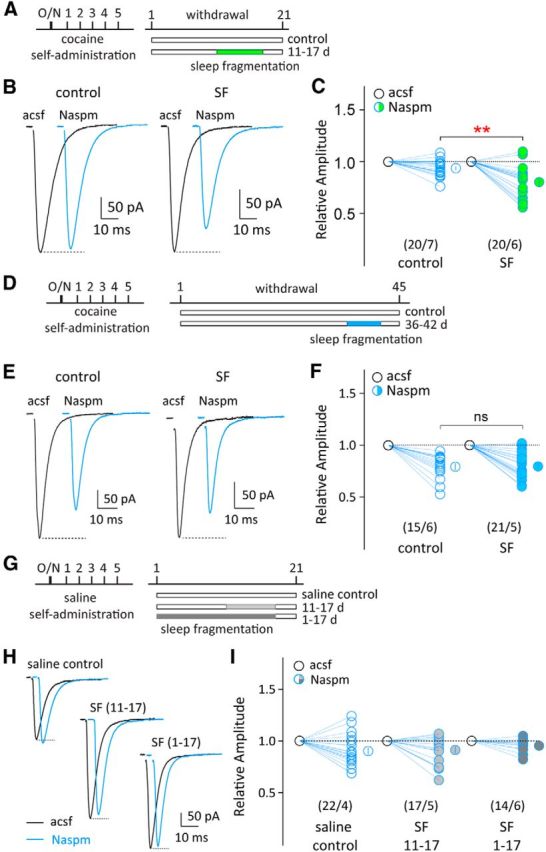Figure 6.

Total SF facilitates synaptic recruitment of CP-AMPARs in the NAc after cocaine withdrawal. A, Timeline of cocaine self-administration training, withdrawal, and total SF (on withdrawal days 11–17). Cocaine-exposed rats without SF were used as controls. B, Evoked EPSCs in example NAc MSNs before and during perfusion of Naspm (100 μm) from control group (left) and SF group (right) on withdrawal day 21. C, Summarized results showing that total SF on withdrawal days 11–17 significantly enhanced Naspm sensitivity in NAc MSNs on withdrawal day 21 compared with the control group. **p < 0.01 (compared with cocaine-exposed rats without SF). D, Timeline of cocaine self-administration training, withdrawal, and total SF (on withdrawal days 36–42). Cocaine-exposed rats without SF were used as controls. E, Evoked EPSCs in example NAc MSNs before and during perfusion of Naspm (100 μm) from cocaine control group (left) and SF group (right) on withdrawal day 45. F, Summarized results showing that total SF on withdrawal days 36–42 did not further increase Naspm-sensitive EPSC components in NAc MSNs (compared with cocaine-exposed rats without SF). G, Timeline of saline self-administration and total SF (on subsequent days 11–17 or 1–17). Saline-exposed rats without SF were used as controls. H, Evoked EPSCs in example NAc MSNs before and during perfusion of Naspm from saline control group (left), SF11–17 group (middle), and SF1–17 group (right) 21 d after cessation of saline self-administration. I, Summarized results showing that in saline-exposed rats, total SF over days 11–17 or 1–17 did not alter Naspm sensitivity in NAc MSNs on day 21 (compared with saline-exposed rats without SF). Numbers in parenthesis represent number of cells/number of rats. ns, Not significant. Error bars indicate SEM.
